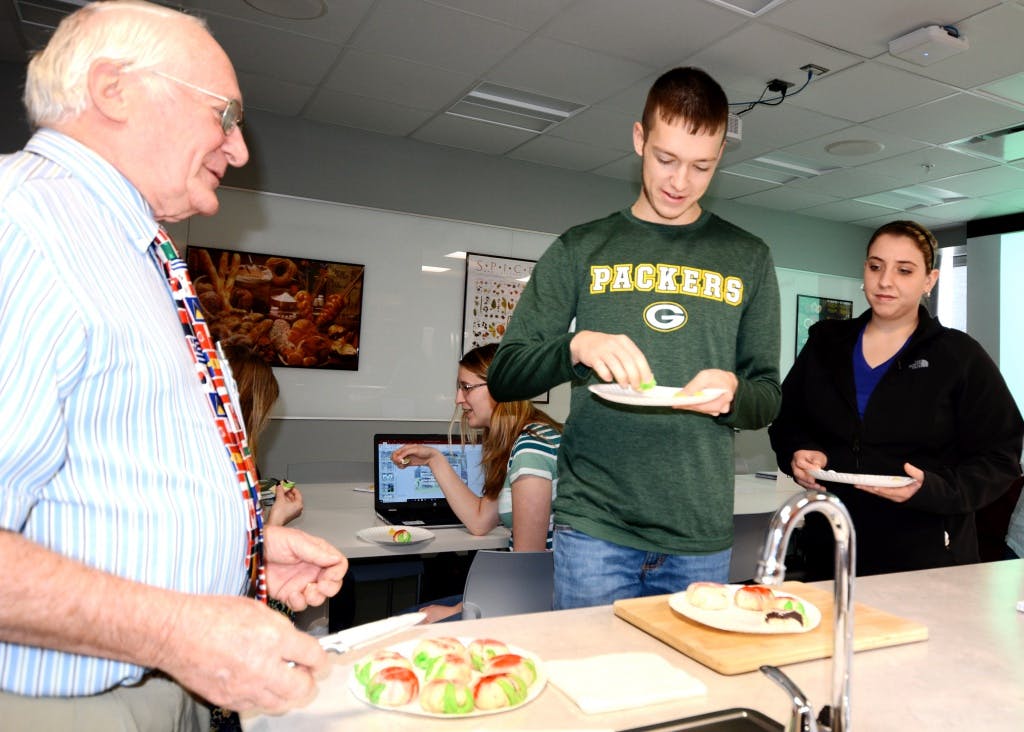World Foods Class Looks at Dining Traditions Across the Globe
While Chinese New Year’s Day was Friday (Feb. 16), several of the traditional holiday delicacies were far from stale when Wilmington College students had an opportunity to taste mung bean cakes, cow cakes and peach buns Tuesday morning.
PICTURED: Dr. Tom Stilwell looks on as Matt Baker and Brittany Cox select pieces of colorful peach buns in celebration of Chinese New Year.
Students in the World Foods class instructed by Dr. Tom Stilwell, associate professor of agriculture, were learning about certain foods either encouraged or restricted by various religions across the world when Stilwell interjected into the discussion that we are in the midst of Chinese New Year, an annual observance in many Asian nations and by persons of Asian heritage around the world.
He explained that, unlike Jan. 1 in the Western world, Chinese New Year starts on a different day each year based on the lunar cycle. It features bell-ringing, fireworks and watching traditional lion dances. Also, families hold reunion dinners on new year’s eve and conduct a spring cleaning to cast out demons and bad vibes left over from the previous year.
One student in Stilwell’s class knew this is the Year of the Dog in the Chinese zodiac cycle but no one could name any of the traditional foods consumed during the celebration, which last two weeks.
They soon not only knew the names, but also the ingredients and how they looked — and tasted. Mung bean cakes are made simply from yellow mung beans, sugar and butter, while cow cakes — not to be confused with cow pies — are a concoction of rice flour, coconut milk, sugar and yeast. The plant known as pandan gives the dish its green coloration. Peach buns have nothing to do with peaches but are composed of rice flour, milk, sugar, red bean paste, pandan extract and a little fig jam.
One Chinese New Year tradition the students did not partake in – but likely wish they could have — is the giving of red envelopes stuffed with money to children. A 2018 version of this tradition features a red app on teenagers’ iPhones in which relatives can transfer cash digitally.

WC Students Get Taste of Chinese New Year
Agriculture